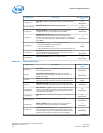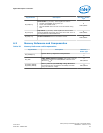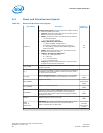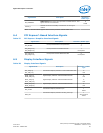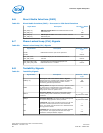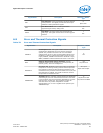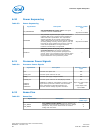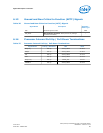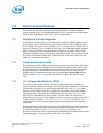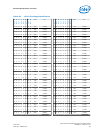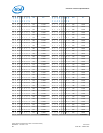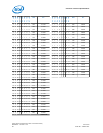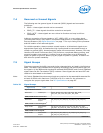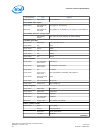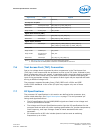
7.0 Electrical Specifications
This chapter provides the processor electrical specifications including integrated
voltage regulator (VR), V
CC
Voltage Identification (VID), reserved and unused signals,
signal groups, Test Access Points (TAP), and DC specifications.
7.1 Integrated Voltage Regulator
A new feature to the processor is the integration of platform voltage regulators into
the processor. Due to this integration, the processor has one main voltage rail (V
CC
)
and a voltage rail for the memory interface (V
DDQ
) , compared to six voltage rails on
previous processors. The V
CC
voltage rail will supply the integrated voltage regulators
which in turn will regulate to the appropriate voltages for the cores, cache, system
agent, and graphics. This integration allows the processor to better control on-die
voltages to optimize between performance and power savings. The processor V
CC
rail
will remain a VID-based voltage with a loadline similar to the core voltage rail (also
called V
CC
) in previous processors.
7.2 Power and Ground Lands
The processor has VCC, VDDQ, and VSS (ground) lands for on-chip power distribution.
All power lands must be connected to their respective processor power planes, while
all VSS lands must be connected to the system ground plane. Use of multiple power
and ground planes is recommended to reduce I*R drop. The VCC lands must be
supplied with the voltage determined by the processor Serial Voltage IDentification
(SVID) interface. Table 38 on page 87 specifies the voltage level for the various
VIDs.
7.3
V
CC
Voltage Identification (VID)
The processor uses three signals for the serial voltage identification interface to
support automatic selection of voltages. The following table specifies the voltage level
corresponding to the 8-bit VID value transmitted over serial VID. A ‘1’ in this table
refers to a high voltage level and a ‘0’ refers to a low voltage level. If the voltage
regulation circuit cannot supply the voltage that is requested, the voltage regulator
must disable itself. VID signals are CMOS push/pull drivers. See Table 46 on page
98 for the DC specifications for these signals. The VID codes will change due to
temperature and/or current load changes in order to minimize the power of the part. A
voltage range is provided in Voltage and Current Specifications on page 94. The
specifications are set so that one voltage regulator can operate with all supported
frequencies.
Individual processor VID values may be set during manufacturing so that two devices
at the same core frequency may have different default VID settings. This is shown in
the VID range values in Voltage and Current Specifications on page 94. The
processor provides the ability to operate while transitioning to an adjacent VID and its
associated voltage. This will represent a DC shift in the loadline.
Processor—Electrical Specifications
Intel
®
Xeon
®
Processor E3-1200 v3 Product Family
Datasheet – Volume 1 of 2 June 2013
86 Order No.: 328907-001



